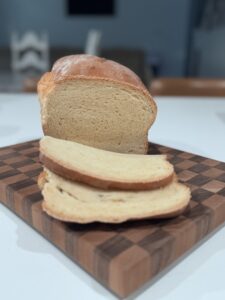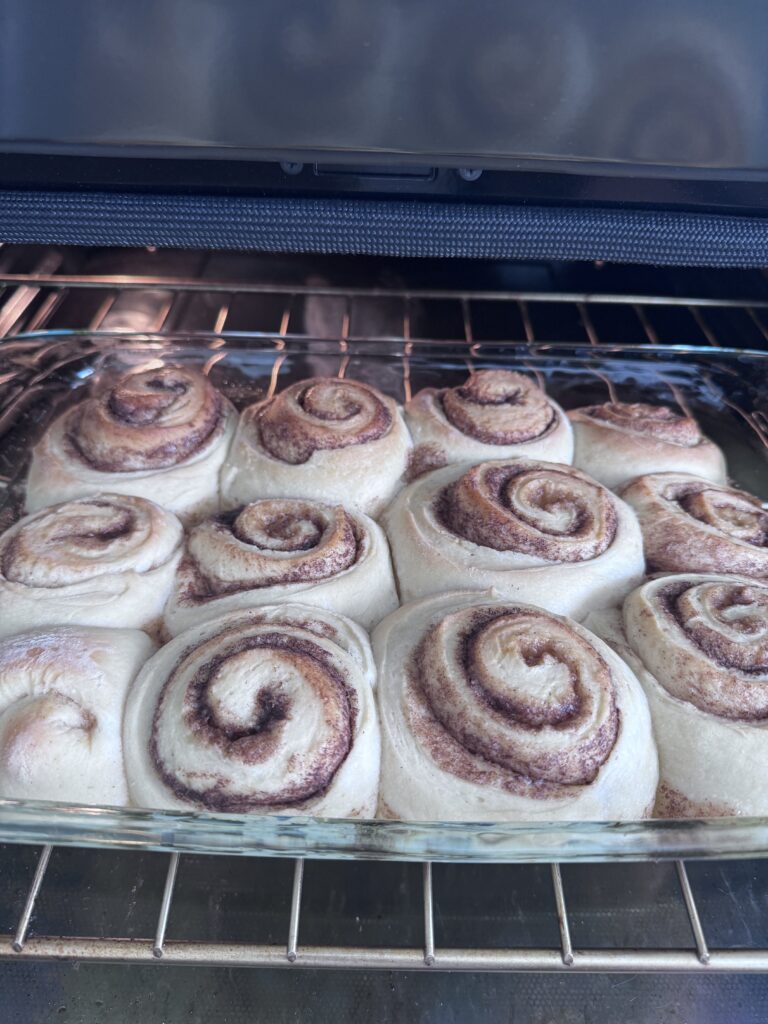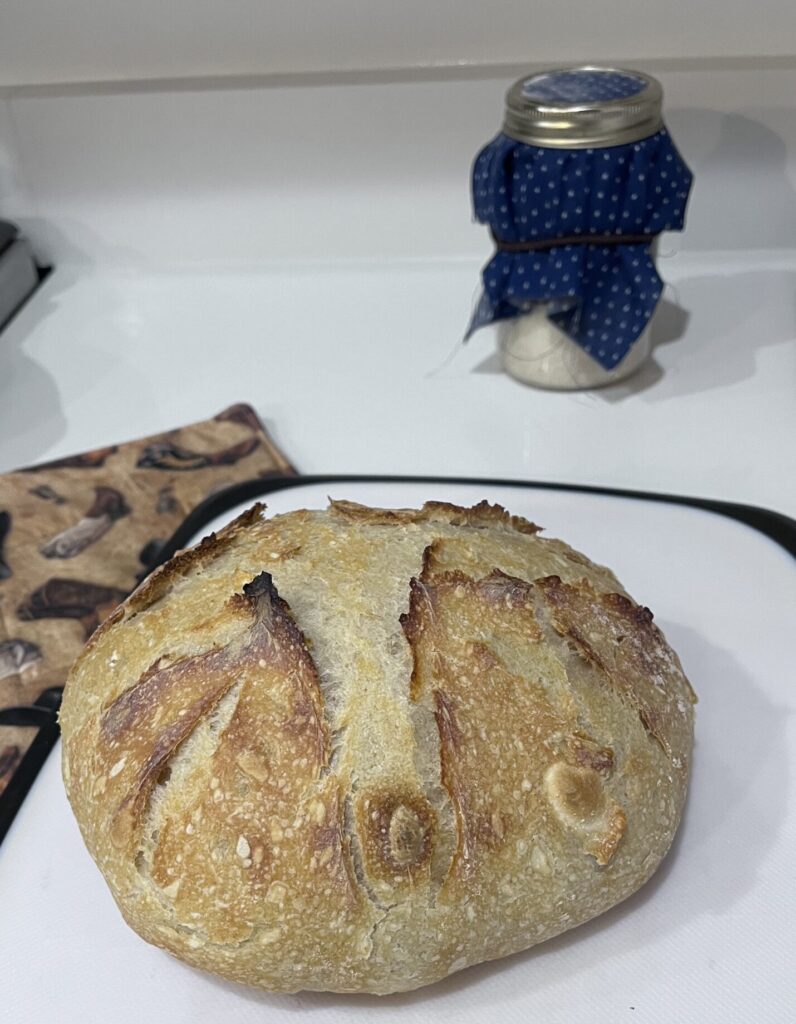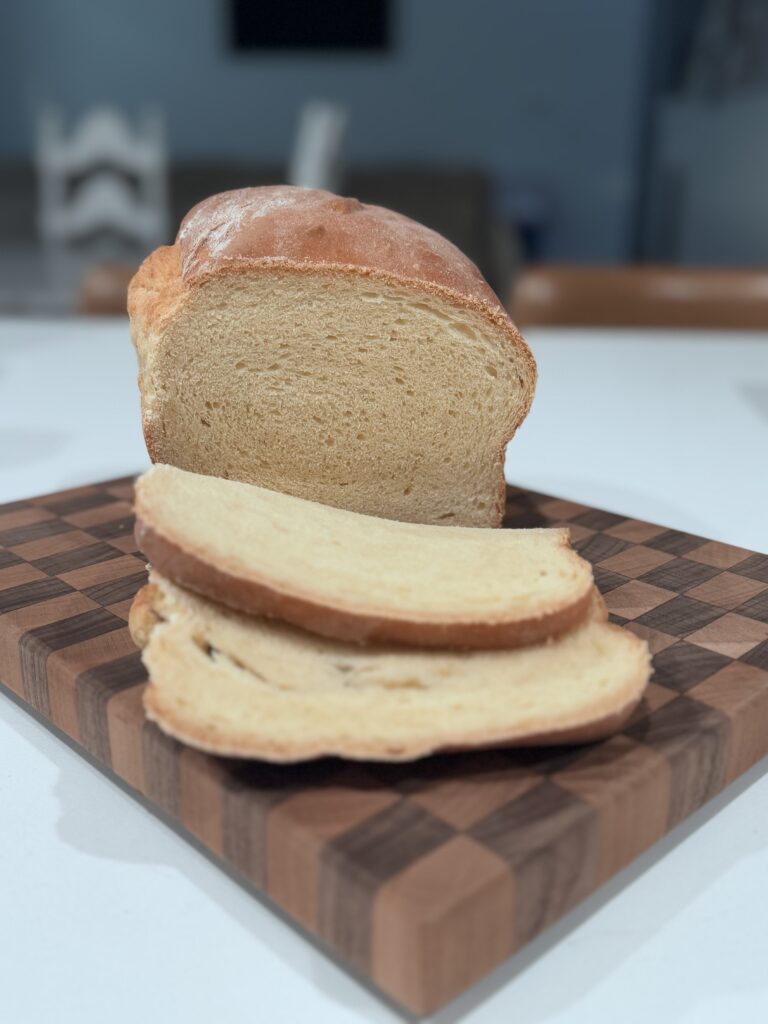 The word “sourdough” was thrown around quite often when I was a kid. This mystical word was always connected with my grandma’s famous sourdough pancakes. My grandparents had uprooted from my grandpa’s family ranch in Wyoming and moved to Utah so my grandpa could start off on his own. They ended up on a large corporate-owned ranch, where one of my grandma’s jobs was cooking for the haying crew. She learned how to make sourdough pancakes from her mother-in-law and had plenty of practice making those famous pancakes daily for the hungry men and boys working on the ranch. I have heard countless testimonials about those sourdough pancakes—how they were delicious, heavenly, and impossible to get enough of.
The word “sourdough” was thrown around quite often when I was a kid. This mystical word was always connected with my grandma’s famous sourdough pancakes. My grandparents had uprooted from my grandpa’s family ranch in Wyoming and moved to Utah so my grandpa could start off on his own. They ended up on a large corporate-owned ranch, where one of my grandma’s jobs was cooking for the haying crew. She learned how to make sourdough pancakes from her mother-in-law and had plenty of practice making those famous pancakes daily for the hungry men and boys working on the ranch. I have heard countless testimonials about those sourdough pancakes—how they were delicious, heavenly, and impossible to get enough of.
However, by the time I came along, my grandparents had purchased their own ranch, and my grandma was working as the county clerk. Maybe she didn’t have the time anymore, or maybe she was just done cooking for crowds, but I never got the opportunity to taste those legendary pancakes. Bummer, right?!
Since I have always loved baking, I was determined to recreate those sourdough pancakes after getting my grandma’s recipe. The recipe was scribbled on an old, well-worn card that had clearly been passed down through generations. It included a brief explanation of how to make a sourdough starter and how to use it for pancakes. In 2017, I embarked on my first attempt at making sourdough. I was completely naive and had no clue what I was doing, but I tried nonetheless. My starter activated, and I made the pancakes… but they weren’t great.
At that point, I didn’t know how to properly feed my starter, that there were countless ways to incorporate sourdough into recipes, or that keeping a starter alive was actually quite simple. Without proper care, my first sourdough starter died, and with it, my dream of making sourdough pancakes every Saturday. After that, I didn’t think much about sourdough for a while.
Then 2020 rolled around—what a time that was. Like many others, I started seeing people on social media posting about making sourdough bread while spending more time at home. I found it intriguing and did some research, but at first, the process seemed like too much work. Life was busy. My husband and I built a new home, I started a new job, and he was focused on growing his business. Hobbies, including sourdough, took a backseat.
Finally, in 2023, I decided to give sourdough another real shot. This time, I did my research and chose to start with whole wheat flour. I kept to a strict schedule of feeding and discarding my starter, and guess what? I kept it alive! I even used the discard in recipes like cookies and muffins, and eventually, I made sourdough pancakes again. This time, they were significantly better.
Encouraged by my success, I stretched my abilities and attempted to make bread. My first loaves were dense and overly chewy—far from the airy, crusty sourdough I had envisioned. Unfortunately (or maybe fortunately), I don’t even have a picture of how badly they turned out.
Over the following months, I continued researching and experimenting. I learned more about maintaining a healthy starter, the science behind fermentation, and how to use discard in a variety of recipes. I switched from whole wheat to organic all-purpose flour from a local mill, which significantly improved my results. With persistence, my bread started turning out better and better, and I realized that keeping a sourdough starter didn’t require nearly as much effort as I once thought.
Soon, sourdough became a staple in my kitchen. I made delicious sourdough cinnamon rolls for Christmas morning, rustic sourdough bread for my baby’s blessing day, and sourdough chocolate cookies that were devoured on Super Bowl Sunday.
Throughout this journey, I’ve learned some valuable lessons about sourdough:
- Sourdough is easier than it seems. It doesn’t have to be complicated or intimidating. You don’t need a strict feeding schedule—sourdough is surprisingly forgiving.
- You don’t need specialized equipment. I started my sourdough journey with a few mason jars, a Dutch oven, and a sharp knife for scoring.
- Your starter is resilient. During my second pregnancy, I experienced terrible morning sickness and could barely stand the thought of cooking. My sourdough starter was neglected for six months, yet when I was ready to bake again, I was able to revive it with just a little care.
- There’s so much more to sourdough than just bread. Discard can be used in pancakes, muffins, cookies, crackers, and so many other recipes.
- The quality of ingredients makes a difference. Switching to organic all-purpose flour significantly improved my bread’s texture and flavor.
- Practice makes perfect. My first attempts at sourdough were far from perfect, but through trial and error, I became more confident and skilled.



Looking back, I’m grateful for this journey. Sourdough has connected me with my family’s history, deepened my love for baking, and given me a rewarding and creative outlet. If you’ve ever considered starting your own sourdough journey, my advice is simple—just start. You’ll learn as you go, and you might just find yourself falling in love with the process, just like I did.
-Reganne
